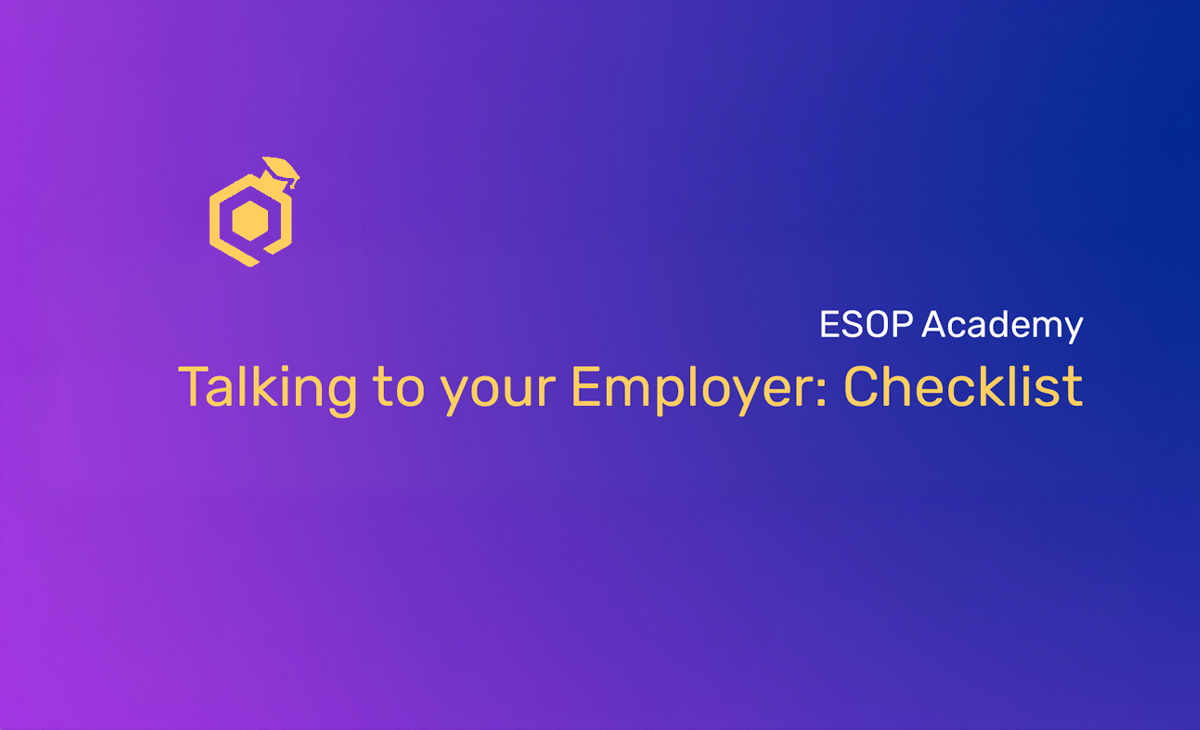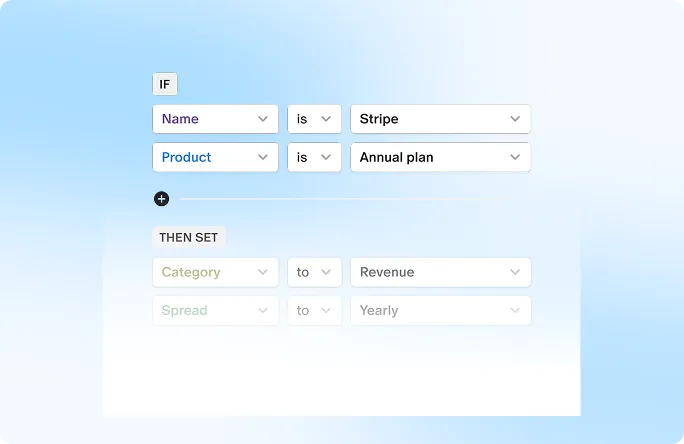Keywords to look out for in ESOP documentation to understand how it all works
The best way to understand how your company's ESOP operates is to talk to your employer. Refer to the checklist of all the key questions you should be asking as you prepare to embark on a journey of an equity holder. But is there anything you can do on your own if it's not possible to obtain all the information from your employer? In fact, yes - most of the answers can be found in the plan documentation.
What ESOP documentation will you receive?
Plan Rules is the overarching document that governs how your ESOP operates. Plan rules set out the terms and conditions that apply to all awards granted under the plan, including the eligibility criteria, what happens to ESOPs when employees leave the company, how and when employees can transact, and what happens in exit event.
When a specific award is made to you under the plan, you will receive a grant letter (or offer letter). This document will outline the specific details of your allocation, including grant date, FMV, exercise price (if applicable), vesting schedule and any performance conditions attached. This allocation will be made under the overarching plan, so the grant letters tend to be shorter documents that don't outline every single condition attached. To get the full picture, you will need to refer to the plan rules.
Your company may go an extra mile and in addition to the plan rules and grant letter provide you with explanatory notes, FAQ, booklet written in plain English, or a tax summary for your jurisdiction.
You should always thoroughly review the plan rules and other supporting documentation before accepting your ESOP offer. When in doubt, consult your tax, legal and accounting adviser to discuss your specific circumstances and before engaging in any ESOP transactions.
How to make sense of it all?
Sounds like there are plenty of resources for you to get answers to your equity questions, but majority of them are structured as multi-page page legal documents that makes little sense at a quick glance. Whilst an important step, reviewing plan rules may seem like a boring and tedious exercise.
To help you out, here a couple of practical tips of how to make sense of all the ESOP gibberish in your plan documents. CTRL+F/ Command+F the following key words to understand how the plan is designed and structured. This list is not exhaustive, but should set you on the path to getting a better understanding of your equity plan.
1. 'Option', 'Right', 'Share', 'Loan', 'NSO', 'ISO', 'RSU', 'RSA', 'SAR' - key words to understand what equity instruments can being used for this ESOP. Your plan may allow for multiple instruments to be used. If that's the case, your grant/offer letter will specify which instrument is used for your specific award.
2. 'Eligibility', "Eligible" - review the eligibility and participation criteria set out in the plan rules, and whether this plan is open to only employees, or also consultants, contractors and directors. This may come in handy as you consider an offer to join a company as a consultant or on a fixed-term contract.
3. 'Accept', 'Agree', 'Application' - review any rules outlined in relation to acceptance of your ESOP offer. Will you need to sign a letter, or obtain witness signatures as part of the process? In some jurisdictions, the acceptance is assumed at grant, and you only have a choice to reject the offer or opt-out.
4. 'Cessation, 'Employment', 'Termination', 'Leave', 'Disability', 'Bad leaver', 'Good leaver' - get a solid understand what happens to both vested and unvested ESOPs when you leave the company. The rules vary from company to company. Some ESOPs are more employee friendly, whilst others favour the employer more.
5. 'Lapse', 'Forfeit', 'Cause' - what are the conditions that may result in your ESOPs being lapsed or forfeited in certain circumstances? This could be tied to your employment, performance or behaviour.
6. 'Restrict', 'Holding', 'Lock', 'Disposal', "Escrow" - are there any restrictions imposed on your ESOPs like restriction or lock-up periods, holding locks after the vesting during which you cannot transact or dispose of your shares? Perhaps further sale or transfer restrictions are applied after a company goes public?
7. 'Vest' - self-explanatory - learn everything about the vesting schedule and conditions attached.
8. 'Performance' - another key term to help you identify if there are any performance factors that must be satisfied before your ESOPs can vest. Are these conditions linked to your individual or company performance? If so, how and when are they measures?
9. 'Condition' - are there any other conditions attached to your ESOPs?
10. 'Period' - this may bring up a multitude of various clauses - read about any holding lock, restrictions, exercise or vesting periods set by the plan.
11. 'Expiry', "Expire" - understand how the expiry is defined and when ESOPs may expire.
12. 'Dividend', 'Distribution' - are you eligible to receive dividends declared by the company? This will primarily depend on the underlying equity instrument you will receive. Will you receive or accumulate dividends while your ESOPs are unvested, or will you need to wait until vesting or conversion of your instrument into underlying shares?
13. 'Vote', "Voting" - do your ESOPs come with voting rights? Like dividends - equity instrument will dictate what shareholder rights you will get to enjoy.
14. 'FMV', 'Fair Market Value', 'Market Value', 'VWAP', 'Price' - understand what value of shares is attached to the underlying instrument at the time of grant, and other transactional milestones. If your awards are cash settled, how will the payout amount be calculated?
15. 'Corporate action', 'Transaction', 'Control', 'Exit', 'IPO', 'Sale', 'Listing' - get a good understanding on how your ESOPs will be treated during various corporate actions, such as IPO, M&A activity, or change of control events.
16. 'Drag', 'tag' - explore if there are any contractual clauses attached to your ESOPs that may be exercised by either minority or majority shareholders in the company in an event of sale of company's shares to a third party.
17. 'Insider', 'Director' - explore what conditions may be applicable if you are considered a director or an insider at your company.
18. 'Tax', 'Withhold' - understanding tax implications of ESOP participation is critical. Don't overlook these clauses.
19. '83A', 'Employee Share Scheme', 'ITAA' - these key words are relevant if you are an Australian employee; if present, these terms can highlight that the ESOP is considered ESS as defined by the Tax Act and will follow the prescribed tax rules in Australia (i.e. you can expect to get an annual ESS tax statement when a taxing point arises for you).
20. "Cash" - to see if the Board (think Company) has a right to settle your award in cash instead of equity. This provision is often used for vested ESOPs if you leave the company - instead of issuing you shares, you receive a cash payment for their value. Or is this a cash-settled plan that allows you to initiate the transaction and to surrender your ESOPs and receive a cash payment in return?
21. "Board", 'Discretion', 'Power' - does the Board of the company have any additional rights that you might need to keep in mind?
22. 'Suspend' - what happens if the company chooses to suspend or terminate the plan?
23. 'Malus', 'Clawback' - what rights does the company have to either reduce your equity award before the vesting, or claim it back after it has vested, and even been exercised? These provisions are reserved if you commit gross misconduct or fraud. So hopefully not something you should worry about!
What's next?
I get it, going through pages of documents is not fun. But accepting an ESOP offer is a long-term commitment and can be an important step to potentially becoming your company's shareholder and embarking on potentially rewarding wealth creation journey. Talking to your employer about ESOPs and going through all the relevant documents are important steps. Is there anything else you can refer to make the process of understanding ESOPs even easier?
Next week's ESOP Academy article will present you with a cheat sheet for some of the most common equity plans offered in various countries. The article will serve as a summary of everything we've covered so far and can be used as a good checkpoint to test your ESOP knowledge.


 Equity management
Equity management

 Fund management
Fund management

 Fund management
Fund management

 Fund management
Fund management











































